I’ll admit I’m not much of a collector. I never got “the gene” or whatever it is that drives people to create and catalogue massive collections, be they Beanie Babies, baseball cards, or butter dishes.
When I was a kid, I did collect bottle caps; filled a whole trash bag with them in fact, but my mom threw them away because I didn’t wash them and en masse they stank to high heaven. I also collected Wacky Packages trading cards. But only because, well, they were wacky. Not because I thought they’d be worth something one day.
That was in the early seventies. Imagine my surprise discovering that serious collectors are still hunting down, trading, and cataloguing them methodically today…
NEW FIND Red Bandache Ludlow: April 1st, 2020. For the first time in three years a Red Bandache Ludlow has surfaced. There are less than 10 of these known, probably closer to five. One of the toughest of all Wackys far tougher than Ratz Crackers or Cracked Animals.
The New Collectibles
One thing that gets me out of bed every day is solving problems in domains that are opaque to me. It means I get to learn new stuff, which is always cool. That’s why, when Jim at nft42 told me his idea for Avastars, I was hooked. See, Jim is a collector; a hardcore NFT collector. And at the time, I was just deep enough into Ethereum development and NFTs to know that this was a project I really wanted to work on. Nearly a year later, we’ve launched the project to great success (the first series of 5000 Avastar Primes sold out in just 23 days) and I’ve gotten quite the education in collectibility.
NFTs (Non-fungible Tokens) are interesting because they are immutable data stored on a decentralized public blockchain. They are rare collectibles with indisputable proof of provenance and ownership. If your understanding of blockchain only extends as far as “that’s where bitcoin comes from,” I suggest reading this brief explainer: “What is Ethereum.” If you’ve maybe heard of “CryptoKitties,” that famously some have sold for thousands of dollars, and are interested to know why, maybe grab a latte and dig into “The NFT Bible.” It’s a great article written by one of the co-founders of Open Sea, today’s leading NFT marketplace.
Another reason NFTs are interesting is that, unlike trading cards, you don’t have to take the manufacturer’s word for how many were produced of a given card or series, and thus what the true circulation is. You also don’t have to worry about forgeries diluting the value of legitimate items. Or of unwittingly purchasing a stolen item. The data is on the blockchain for all to see, from creation on through every owner and what they paid for it. NFTs are the natural evolution of collectibles. Everything you want, and none of what you don’t.
Whether you’re an NFT “degen” or just someone interested in this new collectible scene, I want to bring you up to speed on the Avastars project and the many subtleties that make one different (and perhaps more valuable) from another. Collectors are trying to form their strategies for Avastars and the more information they have, the more effective they can be.
What is an Avastar?
In short, they are individually unique digital avatars, each composed of twelve layers of high-quality artwork. Jim commissioned the super-heroic artist duo Marmota vs Milky to create a massive set of composable “Traits” for us (614 in all).
The artwork layers that make up each Avastar are referred to as “Genes” and include: SKIN_TONE, HAIR_COLOR, EYE_COLOR, BG_COLOR, BACKDROP, EARS, FACE, NOSE, MOUTH, FACIAL_FEATURE, EYES, and HAIR_STYLE. In the Trait Matrix, Genes are the columns.
Each Gene has a number of “Variations” which are also known as “Traits.” These are the rows. As you can see from a glance at the fifty-thousand foot view of the Trait Matrix, some Genes have more Variations than others. While the SKIN_TONE Gene has just 15 Variations, HAIR_STYLE has 78.
This begs the question, how many possible combinations are there? Well, a simple count using the combinatorial “Rule of Product” (multiplying the totals of each set) gives us 9.7105587319 (about 97 quintillion) combinations. That is a vast space of possibilities.
However, that number is tempered somewhat by another Avastar attribute — “Gender.” While Facebook reportedly offers a staggering 71 options for Gender, each Avastar is either Male or Female. As an aside, I can assure you this decision was based entirely on making the project feasible to implement in this century and not a statement about one’s freedom to express one’s own sexual identity. You do you.
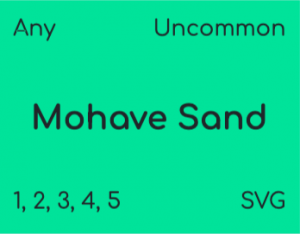
An Avastar Trait
Further complicating the computation of possible Trait combinations is the fact that some are gender-specific and some aren’t.
 Also, not all Traits are available in all Series. In each Generation of Avastars (completely different sets of artwork from different artists), there will be 5 separate Series. Some Traits appear in all Series, some only a single Series, and everything in between.
Also, not all Traits are available in all Series. In each Generation of Avastars (completely different sets of artwork from different artists), there will be 5 separate Series. Some Traits appear in all Series, some only a single Series, and everything in between.
For instance, the Mohave Sand Trait is a Variation of the a SKIN_TONE Gene. It is a gender-neutral color palette which can appear on any Avastar. It is available in all Series of Generation 1, as are all of the SKIN_TONE Variations. Genes where all Variations are gender-neutral are: SKIN_TONE, HAIR_COLOR, EYE_COLOR, BG_COLOR, and BACKDROP. This will most likely be true for all Generations.
The only other Gene with gender-neutral Variations in Generation 1 is FACIAL_FEATURE. Of its 46 Variations, 6 are gender-neutral. All the rest are either Male or Female. I will therefore leave as an exercise for the most hardcore of Avastar collectors the task of computing the total number of possible combinations of Gen 1 Males and Females. I will only say that my rough calculations put each in the quadrillions.
Avastar Discovery

Scroll to Discover the Avastar of Your Dreams
When you visit the site, you can simply click the “Discover” link and begin scrolling. Your browser will generate an infinite feed of unique new Avastars. If you see one you like, you can click on its image to get more details about it or click the little icon on the lower right side of its card to add it to your “Queue.” You’ll notice that there are different prices (set in ETH) on the lower left of the card, and a mysterious icon in the middle that is the same color as the border of the card. More on those when we get into Avastar Ranks below.
Once you’re ready to buy, you can click the “Queue” link. Remove any Avastar you may have changed your mind about by simply clicking the little icon on the lower right of its card. Connect your Ethereum wallet (we suggest using MetaMask for the best experience), and then click the “Purchase” button. You will be asked to confirm a transaction depositing enough ETH to the Avastar Prime Minter contract to cover all the Avastars in your Queue. After that, just sit back and let the app do its thing. Your Avastars will be minted one at a time by our minting service.
Do not close your browse while the Queue is being processed. When it is done, you can check your Ethereum Address on Etherscan or OpenSea to verify the NFTs made it into your wallet.
Should the process fail for any reason, (e.g., in the rare case that one you’ve generated already exists) the app will provide a button for withdrawing the remainder of your deposit. If you close your browser tab while the process is ongoing, you can still get your deposit back by visiting the contract on Etherscan, signing in with your Ethereum wallet, and clicking the “Write” button on the withdrawDepositorBalance function. We call this the Escape Pod.
Generations and Series
The Avastars smart contracts only allow for 5 Generations. Each Generation will have its own distinct look and feel, imparted by the commissioned artists. No matter how popular the project becomes, there is a hard limit to how much art it can encompass.
Earlier, I mentioned that each Generation is broken into 5 Series. Those are the randomly generated Avastars that the public can Discover by scrolling and and buy on the spot. As you scroll, your browser is generating a continual feed of possible Avastars. More on the specifics this process shortly. But first, …
Each Generation actually begins with a “Series 0” which is composed of 100 Founders and 100 Exclusives. Founders go on sale for a limited time, and Exclusives are given away to friends of the project gratis.
Founders and Exclusives are hand-crafted Avastars that break nearly all the rules. For instance, the so-called Genesis Avastars (#0 and #1) have almost all Legendary traits. While possible to discover in the fullness of time, these Avastars have a highly unlikely combination of Traits. They can also include Traits that wouldn’t normally be discoverable in the same Series. Clearly, these are very special. It’s not surprising that the two Genesis Avastars are currently owned by WhaleShark, a major collector on the NFT scene. On the day Genesis #0 sold for 40 ETH, 1 ETH was worth ~237 USD. That’s $9,480.
Each normal Series (1-5) has a hard “cap” on the number of Avastars that can be created: 5000. Once a Series has capped, no more Avastars can be minted in that Series. Together with the cap on Generations, this provides provable scarcity. While scarcity alone does not equate to the value of a collectible, it certainly is a factor. Consider what happens when a government prints more money to “stimulate the economy.” Inflation. All the money is now worth less than it was before, because it is less scarce. Prices go up to compensate.
So even though there are quadrillions of possible Avastars that could be discovered and minted, only a relatively small number ever will be in circulation. We hope this will contribute to Avastars holding and even increasing in value over time.
Primes and Replicants
Avastars from Series 0-5 are called “Primes.” Because of the Series cap, there can only be 25,200 Primes per generation.
Why are they called Primes? To distinguish them from “Replicants.” After Series 5 is capped, anyone owning 2 or more Primes will be able to create a Replicant by composing it from the Traits of their Primes. Each Trait can be “reused” exactly once. Consequently, there can only ever be the same number of Replicants as Primes for a Generation. Even though that cap is a logical limit, it is also reinforced by the contract.
Trait replication is a unique and dynamic feature of the Avastar NFT. In fact, our Ethereum smart contract allows the owner of a Prime to give access to anyone to replicate their Traits. This opens an interesting door for developers of other NFT projects to interact with Avastars. For example, you might be able to trade a particular Trait on one of your Primes for a Magic Sword in an adventure game that uses NFTs as in-game assets.
While the ability to mint Generation 1 Replicants won’t be available until after Series 5 caps, you can actually play around with what it will be like on this really awesome tool created by one of our incredibly helpful community members: Avastars Replicant Preview.
This tool could help you shore up your collection strategy by helping you to visualize your perfect Avastar.
At the time of this writing, only Series 1 has capped and Series 2 is due to open shortly. But fortunately, the 200 so called Promos (Series 0 Founders and Exclusives) are composed of nearly every Generation 1 Trait. And you don’t have to own a given Avastar to play with them in the Preview tool. Give it a whirl. It’s a really fun tool to play around with. With this capability in your hands, you might be able to decide what traits you want to collect over the remainder of Generation 1 so that you’ll be able to assemble the a sublime Replicant when the time comes.
Trait Rarity

Rarity Levels
Traits, which represent Variations of a given Gene, have an associated “Rarity Level.” Those Levels are Common, Uncommon, Rare, Epic, and Legendary. On the Trait Matrix above you can see the Rarity Levels reflected as colors blue, green, yellow, purple, and red.
For each Gene, the Variations are split across these 5 Rarity Levels. Each Level is represented in the generated population in the following distribution:
- Common – 60%
- Uncommon – 22.5%
- Rare – 12.5%
- Epic – 4.75%
- Legendary – .25%
When an Avastar is being composed, we first pick a Gender. That’s a coin toss. Next, a Variation for each Gene must be chosen at random. In order to enforce the Rarity distribution, Trait selection is a two-step process.
- Choose a Rarity Level for the new Trait with a weighted algorithm whose output reflects the desired distribution.
- Given the Rarity Level, choose a Variation of the Gene in question that has been assigned to that Level and is usable by the selected Gender. That’s the Trait.
Based on the Rarity distribution, savvy collectors naturally seek out Avastars with as many Legendary Traits as possible. That may or may not be the best approach, since the minted population will be skewed by this activity. What was rare at generation time may be less so in the final distribution.
Avastar Score

The Deets on My Personal Avastar
Another Avastar metric to consider is its “Score.” Since the Avastar Score has been particularly confusing to collectors, I want to go into some detail here about how it is computed.
The Score is a number from 1 to 100. It is derived from the Traits making up the Avastar. I’ll get into how that’s done in a moment, but first I want to dispel a common misconception:
Score does not reflect the odds of finding an Avastar with a given composition.
Series 1 showed us that the odds of finding an Avastar with 3 Legendary Traits are quite high. Yet such a specimen might have a relatively low score, prompting many a collector to scratch their head.
An Avastar’s score is a value that is affected as much by the Common Traits as it is by the Legendary Traits. And everything in between. Here’s how it’s computed:
- For each of the Avastar’s 12 Traits
- Determine the Trait’s Rarity Level as a value 1-5
- Look up the Variations per Level for the given Gene (each Gene has a different number of Variations per Level)
- Divide the number of Traits (12) by 1 times the number of Variations per Level and add to the accumulating maximum possible score.
- Divide the number of Traits (12) by 5 times the number of Variations per Level and add to the accumulating minimum possible score.
- Divide the number of Traits (12) by the Trait’s Rarity Level (1-5) times the number of Variations per Level and add to the accumulating actual score.
- Scale the score. The accumulated minimum and maximum possible scores will not automatically be 1 and 100. Thus they need to be scaled onto the desired range (1-100).
- Subtract the low end of the desired range from the high end
- Subtract the accumulated minimum score from the accumulated actual score
- Subtract the accumulated minimum score from the accumulated maximum score and add the low end of the range
- Multiply the result of step 1 by the result of step 2 and divide by the result of step 3
The upshot of all this is that you end up with an Avastar Score in the range of 1 to 100. If you have an Avastar with all Common Traits, you will see the lowest possible score, 1. Conversely, all Legendary Traits yield a Score of 100. It’s in the middle ground where things get interesting, which has been the focus of so much consternation.
If you pay attention to what’s happening in the computation, you’ll see that while higher Level Traits act to pull up the Score, lower Level Traits are simultaneously acting to pull down the Score. This is why the Score for an Avastar with 5 Legendary Traits doesn’t directly reflect the odds of discovering an Avastar with 5 Legendaries.
And it gets even more tricky. Because of the fact that some Genes have more Variations per Level than others, one Legendary may be worth more in the calculation of Avastar Score than another.
Let’s consider two examples, both of an Avastar with 5 Legendary Traits and 7 Common Traits.
Example 1
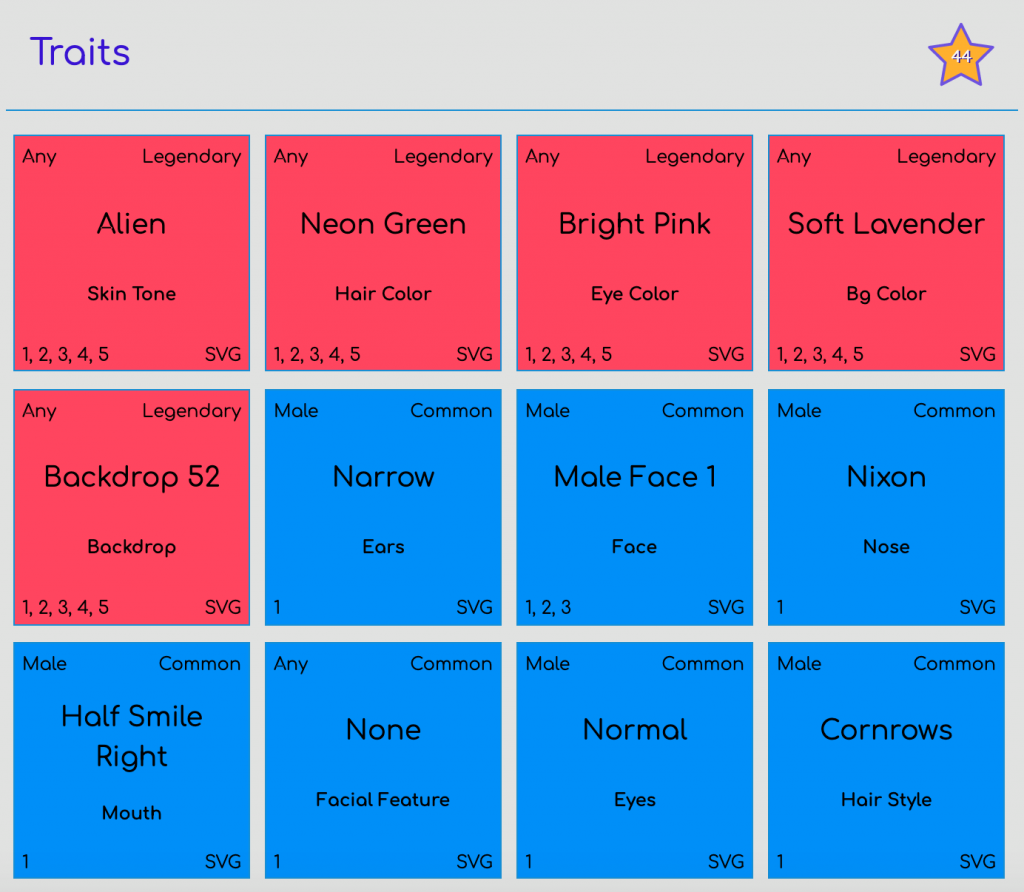
5 Legendary + 7 Common = Score 44
Example 2
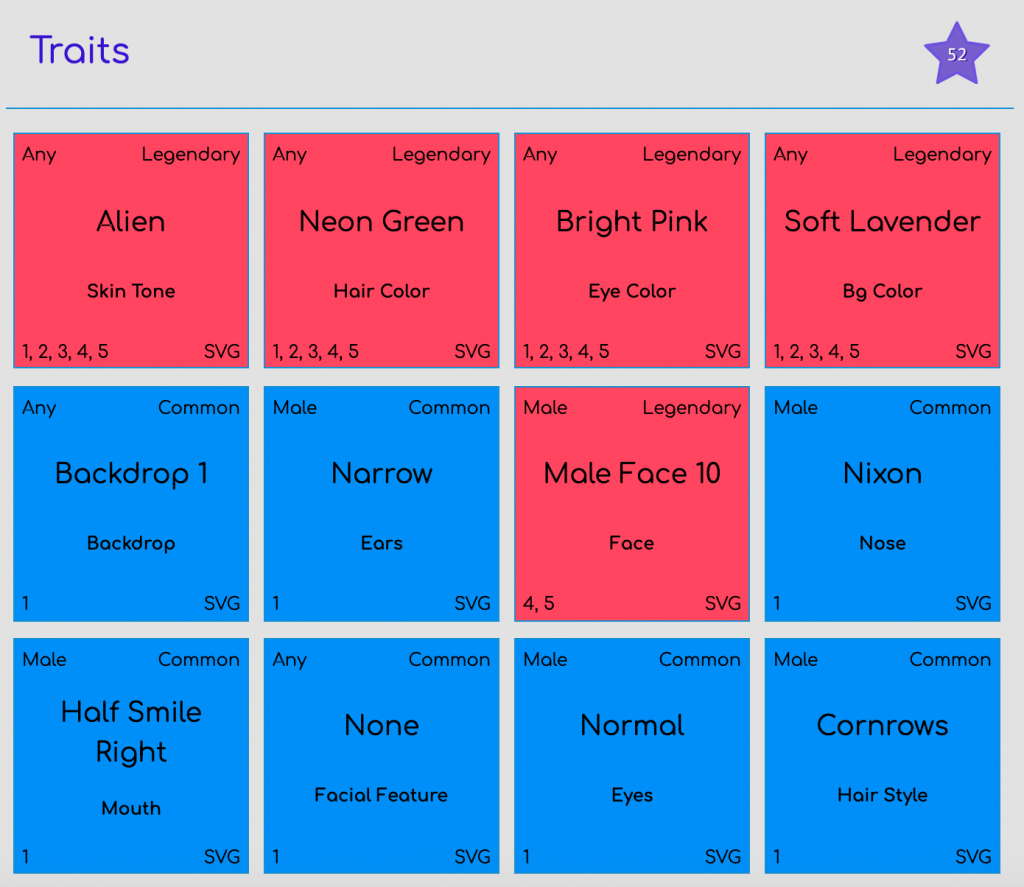
5 Legendary + 7 Common = Score 52
These examples illustrate that given the same numeric composition of Trait Rarity (5 Legendary, 7 Common), depending upon which Traits are Legendary and which are Common, you could have different Avastar Scores.
Why is this?
If you look at the Trait Matrix above, you’ll notice that the BACKDROP Trait has more Variations per Level (4) than does the FACE Trait (2). Therefore, for a given Series in which it appears, if you get a Legendary FACE Trait, there are only 2 possibilities per Gender. For a BACKDROP Trait of the same Rarity Level, there are 4 possibilities. It was decided that the more space a Trait took up in the Rarity Level for a given Gene/Gender, the more weight it would be given in the Score.
Avastar Rank
It is up to the individual collector how much importance to assign to the actual Avastar Score. But there is another way to size up an Avastar: its “Rank.”
Just as the Traits have 5 Rarity Levels, we have broken the Avastar Score range into 5 Rank Levels, conveniently using the same terminology: Common, Uncommon, Rare, Epic, and Legendary.
Remember that the Score does not reflect the odds of a specific combination of Traits, but it does reflect the overall Trait makeup of the Avastar. There are many ways to achieve the same Avastar Score, with different combinations of Trait Rarity. Therefore, we could not control how often an Avastar of a given Score would be generated. We only control how often Traits of a given Rarity Level are generated.
Nevertheless, to avoid cognitive dissonance, we wanted the Avastar Rank to fall into line with the percent chance associated with the Trait Rarity Levels. How did we do that?

Rank Cutoffs
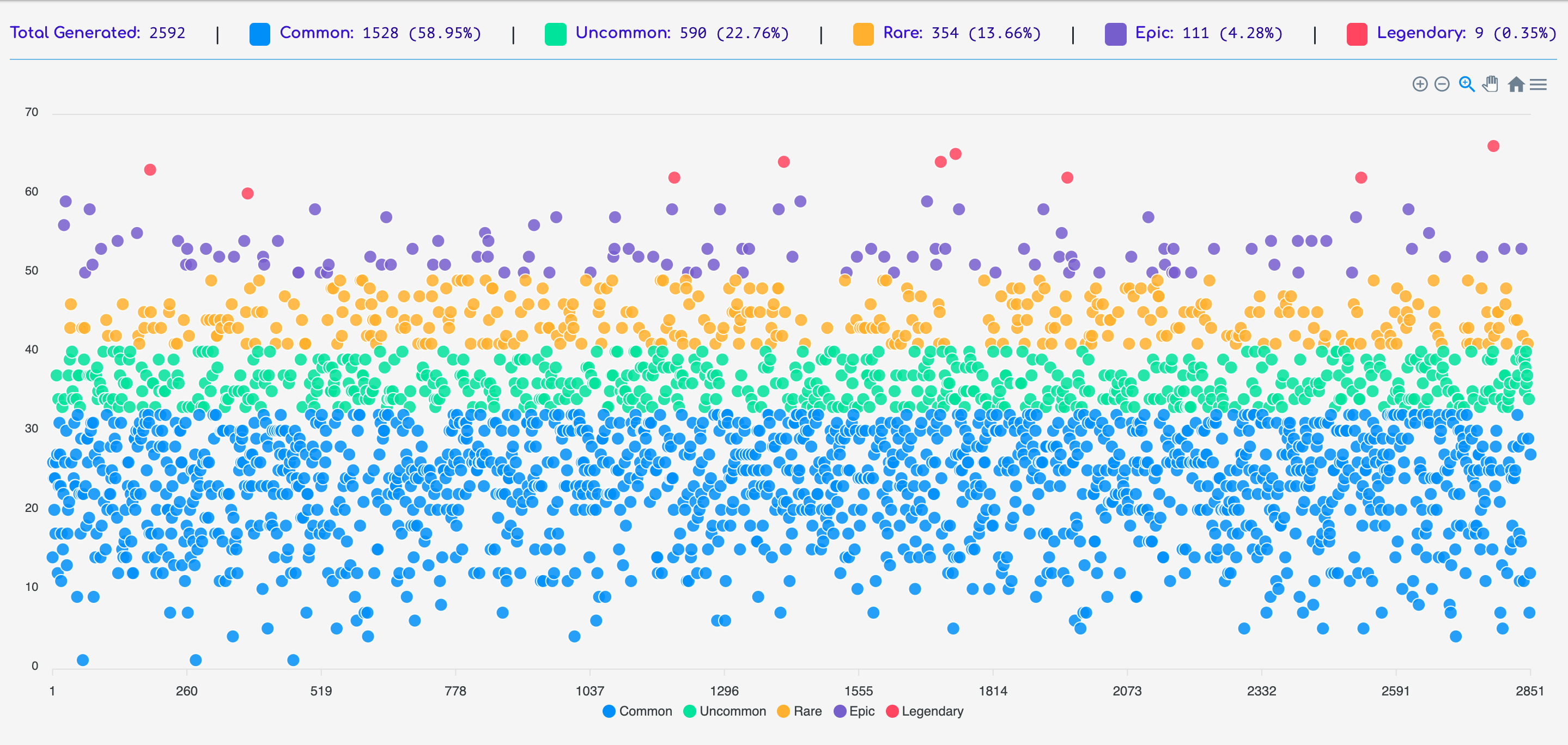
Avastar Rank Distribution
We arbitrarily set cutoff values for each Rank and analyzed the distribution of generated Avastars of different Rank. Dialing in the cutoff values was just a matter of adjusting a slider and then scrolling to generate several million Avastars. The more generated, the more the percentages settled down. When the percentages we saw in the generated population began to closely track with the percent chance associated with the Trait Rarity Levels, we locked in the cutoffs.
An interesting thing to note about the distribution of Ranks above is that the extremes are less densely populated. That is, within the ~2500 generated Avastars for the screenshot, you see very few red dots (representing Avastar Scores of 60 and above), but there are also relatively few representing the low end Common (10 and below). Getting all Commons in a generated Avastar is itself a rare occurrence. Not as rare as getting all Legendaries, but nonetheless a stratum of Avastar scarcity to consider.
Strategy
You could just buy Avastars that are attractive to you. Disregard the Trait Rarities and the Avastar Score and Rank. A lot of people are doing just that. But if you’re a serious NFT collector, and are trying to figure out how best to spend your Avastar-earmarked ETH, you may need to up your game. Here are a couple of helpful destinations…
Toward Replicants
While the ability to mint Generation 1 Replicants won’t be available until after Series 5 caps, you can actually play around with what it will be like on this really awesome tool created by one of our incredibly helpful community members: Avastars Replicant Preview.
This tool could help you shore up your collection strategy by helping you to visualize your perfect Avastar.
At the time of this writing, only Series 1 has capped and Series 2 is due to open shortly. But fortunately, the 200 so called Promos (Series 0 Founders and Exclusives) are composed of nearly every Generation 1 Trait. And you don’t have to own a given Avastar to play with them in the Preview tool. Give it a whirl. It’s a really fun tool to play around with. With this capability in your hands, you might be able to decide what traits you want to collect over the remainder of Generation 1 so that you’ll be able to assemble the a sublime Replicant when the time comes.
Trait Composition
Maybe you want to know: “Is this the only Avastar with Zombie skin and Bright Pink eyes?”
This is a different strategic direction entirely. And certainly a way of assessing the uniqueness of a given Avastar. So it’s not surprising that Kai Gani, a community member and collector who was the first to decipher the CryptoKitties Genome.
All Avastars are unique if you look at all 12 traits but it seemed like if you could establish the minimum number of traits to establish the uniqueness of an Avastar, that could be useful.
The concept is, an Avastar can be unique by 1, 2, 3, 4 or however many traits it takes to distinguish it from all the others. So in the above example, that would be scored UB2 — meaning is it Unique By 2 Traits: Eye Color and Skin Tone.
Read about Kai’s ‘Unique by’ Ranking system here.
Conclusion
Building Avastars has been the most interesting coding project I’ve worked on in decades. And Jim’s deep understanding of what collectors are looking for in digital collectibles ensured that it would be a success. If you’re a developer interested in how we built, tested, and deployed Avastars to the Ethereum Mainnet, have a look at the project. It’s open source.
One thing I find interesting is that while we have assured the rarity of Traits and Ranks in the generated distribution of Avastars, the public chooses what to mint. So in the final population of each Series after it caps, we may find that certain Common traits were underrepresented and certain Legendary Traits overrepresented. That may lead to certain Common Ranked Avastars being perceived as more valuable than even certain Legendary ones.
For all you Avastar collectors out there, I hope that this little guide helps you grasp the subtleties a little better. Maybe it can inform your strategies about which ones to choose as each Series unfolds. If you’re new to NFTs and Ethereum, this might be a fun first project to get involved with. It is worth mentioning that our Digital Asset Ownership License gives you complete freedom to do whatever you like with your Avastars, even commercial use.
Oh, and one more thing: Avastar art and metadata is stored entirely on the blockchain. In most NFT projects, the associated artwork and metadata are stored off-chain, usually on servers controlled by the project creators. That means if they close up shop and stop hosting the art and metadata, you are left holding a number in an array (the token ID) on a smart contract. Your Avastars and the metadata that describes them will be around as long as Ethereum exists. Jim’s mantra is Art + Metadata = NFT. I think it’s a good one.


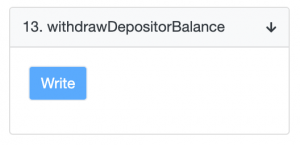
Not sure how many people have found this article but it is freaking awesome. Is there a discord or something where hardcore collectors are chatting about strategy? I had to read this a few times but on the surface there are a few things I learned that will help me narrw down the additional ETH I have to spend.
I’m deffinitely going to try to dig around a bit more.
Hi Eric,
Thanks for the kind words, glad it helped. You should definitely hop in the official Avastars Discord and check out the collectors-corner channel for deeper discussion of collector strategy. https://discord.gg/avastars
Cheers,
-=Cliff>